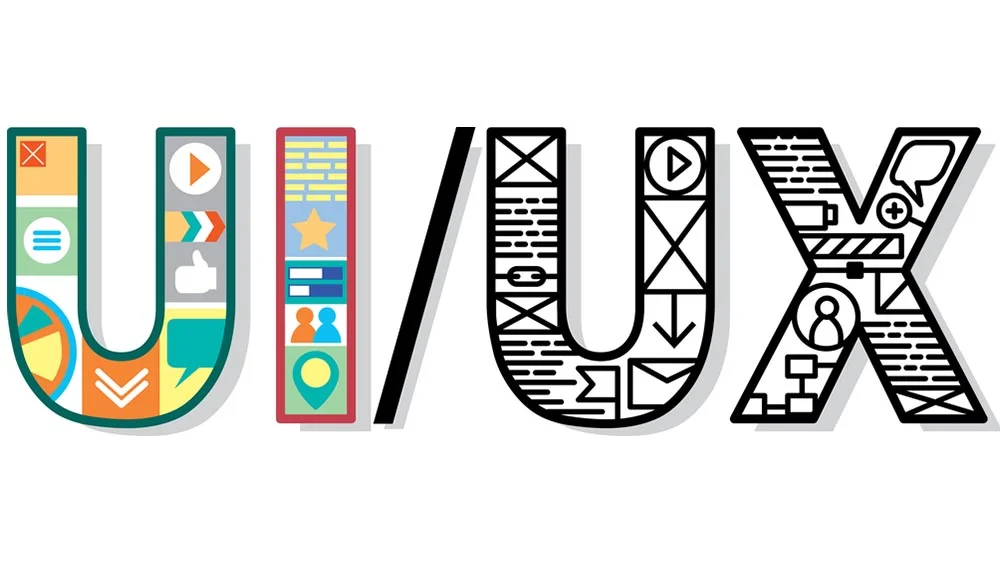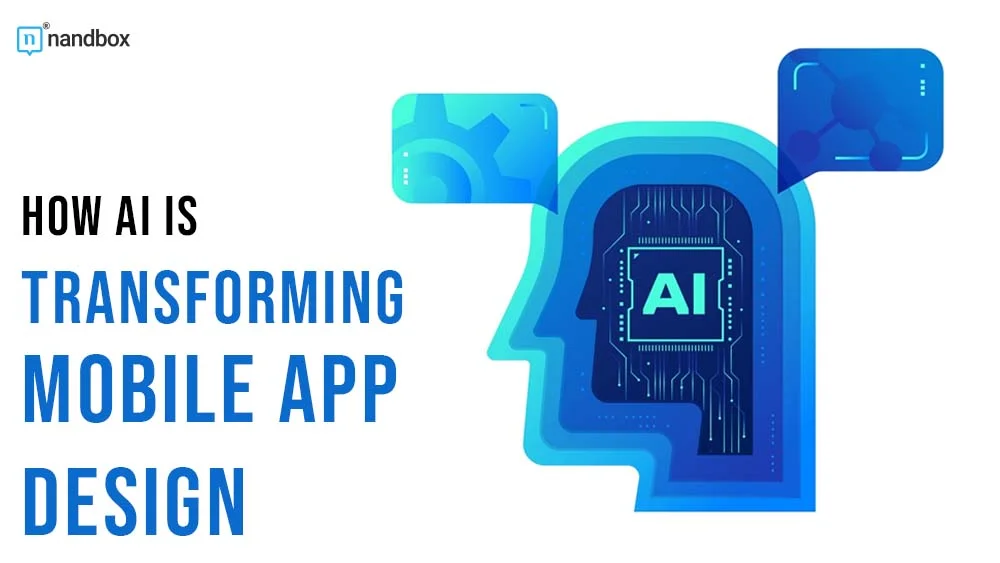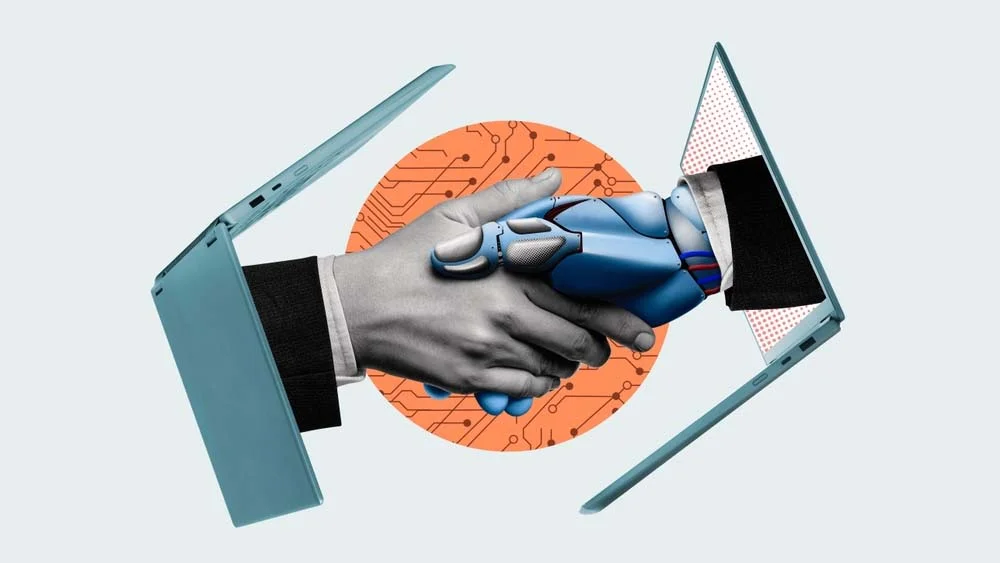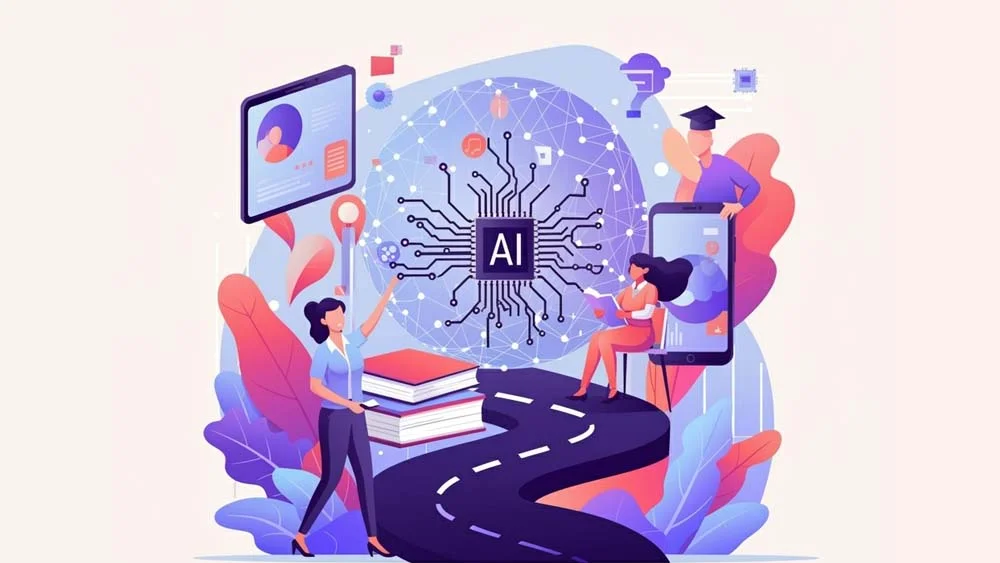It all starts with the fusion of AI and mobile app design. But how is such fusion shaping our lives and giving it a whole new meaning or definition? Let me tell you how AI is shaping the world of mobile app design comprehensively in this guide and highlight how nandbox’s new version release is AI-powered to become one of the top native app builders that can actually grant you an aesthetically pleasing app design in today’s digital age.
Mobile app design has come a long way from the static, rigid, and dull interfaces that the past dictated we have to a dynamic field of the present and it’s innovations. With the traditional efforts of early designers, manual was a word that early developers were used to. They were also bound to human intuition and the process of “trial and error.” However, with the rise of AI, this whole landscape is quickly shifting. AI is now playing a pivotal role that is reshaping life as we know it. It is giving us a whole new definition of mobile app design.
That is, by automating tasks that are complicated, analyzing user behavior, and delivering personalized experiences at a large scale. This not only enhances the efficiency of design workflows but also significantly improves the user experience. This is simply a solution that is empowering designers and equipping them with the tools that they need to evolve their designs and focus more on their level of creativity while letting AI handle data-driven adjustments. Dive deep with us to understand more about AI and how it is helping the mobile app design industry.
Days of Mobile App Design: A Look at Traditional Mobile App Design Practices.
In the early days of mobile app design, everything was manual. I know that it is obvious since the kind of technology that we’re experiencing now wasn’t there back in the day. However, the point is that designers had to rely on their own human intuition to create interfaces. It was often with limited tools and resources as well, which made the whole process way more difficult than it is nowadays. But does that mean that app development was kind of impossible back then? No, it wasn’t or else we wouldn’t have what we have and wouldn’t have evolved the way we did. However, it was slow. Let me phrase it simply: it was a slow, labor-intensive, and challenging process.
Traditional design practices were mostly static, offering limited flexibility to accommodate different user preferences or screen sizes. The thing is, the challenges of traditional development didn’t stop there. I know you may ask, “How could designers predict user behavior without hard data?” The answer is simpler than you think. They simply couldn’t. As a result, many design decisions were based on assumptions, leading to apps that often missed the mark in terms of user experience.
So, were there any further limitations? Designers had no way to automate repetitive tasks, and conducting usability testing was cumbersome. Without AI to analyze real-time data, refining layouts or improving navigation relied on trial and error, slowing innovation. Could today’s user expectations have been met with these outdated methods? Likely not. The process was far from the adaptive, efficient workflows we see today—highlighting how essential AI has become in transforming the design landscape.
AI in Mobile App Design: How AI is Revolutionizing UI/UX Design

We have all heard that AI is taking things to the next level when it comes to technological advancements. The main thing that developers have noticed is it’s impact and the way it’s changing the game for UI/UX design. That is achievable by making the process one that is smarter, faster, and more personalized to individual users. But how does it execute what I just mentioned? One way of execution is through the process of automation.
AI has the capability of automating design suggestions for designers. Take Chat GBT for an example. Sign in and ask the bot to generate a design idea for a Tangled movie but in the style of Tim Burton. You’ll find it giving you details of what everything will look like. From dim colors and messy hair to big eyes with black rims around them. We all know how Tim Burton embraces the dark and obviously so does Chat GPT.
Additionally, AI can simply analyze user behavior. It can actually tell you how long certain users spend on a screen or which are their go-to buttons that they click the most in your app. This helps designers in having the necessary data recommendations for improving layouts and user flows.
AI and Personalization: AI’s Important Role in Personalization
What about personalization? Can AI help with that too? The answer is a big, fat yes! As a matter of fact, AI excels at personalization as well as anything else. It can enable mobile apps to create unique experiences for every user. From customizing content to adjusting colors and fonts, AI tailors the app to fit each individual’s preferences, making interactions more engaging.
And then there are adaptive interfaces. Have you ever noticed how an app seems to adjust perfectly to your phone’s screen size or performance? Yup, that’s your friendly neighborhood AI being busy working and tweaking UI elements in real time. That is, to ensure a smooth experience no matter the device. Isn’t life better with a solution that is smart enough to lend you their digital hand whenever you need it from time to time?
The Ethical and Creative Challenges of AI in App Design
AI comes with a great deal of efficiency and innovation when it comes to mobile app design. However, it also raises ethical and creative challenges. One of the biggest questions that we should take into consideration is “How do we balance AI-driven automation with human creativity?” Why is this question an important one to address? Well, the fear of AI originated from the fact that humans think that at some point they will be dispensable. That at some point AI will dominate the market and workforces will demand AI more than humans.
I can with a resting conscience say that Hollywood’s to blame for this theory. I understand the fear though; however, AI is actually more than controllable. People ask, “Will it replace our creativity or stop it ever?” Yes, it may stop the creativity of some people who will find it too easy to use it and depend on it. But in other cases, it simply won’t. The key for this is to use AI as a tool to enhance, not replace, human creativity. Let it be your assistant and not you.
Let it offer insights and speed up repetitive tasks while leaving space for designers to craft unique experiences. Another challenge is bias in AI algorithms. Can AI ensure inclusivity in design, or will it reinforce biases? AI learns from data, which may contain unconscious biases, leading to designs that exclude certain user groups. Addressing this requires careful oversight and diverse datasets. Lastly, user privacy is a concern. How much data should AI collect to personalize an app without invading privacy? Designers must strike a balance, ensuring transparency while delivering tailored experiences. These ethical questions keep the conversation around AI in app design both exciting and necessary.
nandbox and AI: Our Newest Version Has It All!
With the rising demand for AI solutions, people are expecting AI to be integrated in everything to facilitate processes and help them by granting them a fun designing experience. That is why nandbox took notes and has now released an app builder version that has AI integrated in it. This is nandbox’s AI in the mobile app design era.
Designers always face problems when it comes to implementing the app visions of their clients with every personalization requirement they ask for. Meeting the app vision of someone can be a great challenge. That is why AI is now available to help app developers brand their apps in the way that their brand is taking.
You can now insert a brand’s logo into our app builder and let our AI solutions take care of the rest for you. Is the logo in pink, white, and black? No problem. Our app builder will help you customize the app’s colors from button colors, icons, elements, and even backgrounds. It will make suggestions for you regarding an improved color scheme that draws inspiration from the logo and will assist you in quickly launching your app’s branding.
nandbox’s Material 3: Advancement and Support
We all love aesthetics; each and every human has a little piece of them that belongs to a certain artistic style. That is why nandbox wouldn’t wish for anything but to cater to that little artistic side of us. Not that M3 is all about aesthetics. This is an advanced design layout that enhances functionality as well as provides people with applications that catch the eye of users and grab their attention for good. This is a design layout that is featuring new and modern color schemes, an enhanced coloring system, and modernized buttons that will make users fall in love with how the app looks and feels in their hands. It also enhances the app’s display on smart devices and makes it aesthetically pleasing for everyone!
Our Futuristic Vision for AI Integrations in nandbox’s Native App Builder
Additionally, our developers are currently working on making our AI solution help with app insights and analytics for all app developers. That is, to be able to have access to predictive analysis easily within their app and in the palm of their hands. This will help with getting to understand how your app is doing, what needs to be focused on and what is loved and what isn’t. With nandbox, evolution and innovations are what we aim to provide no-coders with. That is why it is the perfect app development solution for today’s citizen developers from all around the world. It is budget-friendly, easy to navigate, aesthetically pleasing to use, and helps you produce industrial-leading applications for today’s busy market!





